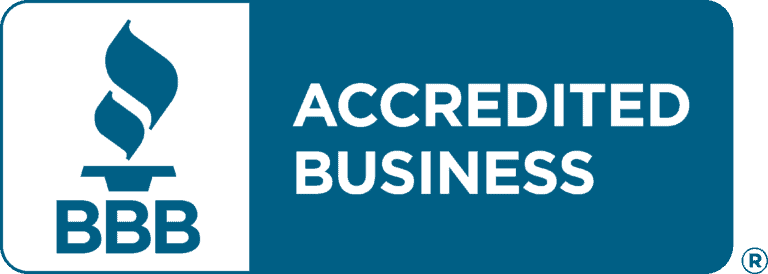Worker safety and well-being have emerged as a focal point for businesses and corporations seeking to promote productivity and employee satisfaction. Naturally, workers’ comp has been the cornerstone of workplace safety. Over the years, workers’ comp was always there to provide financial and medical assistance to injured workers. But with rising inflation costs, medical bills, and an aging workforce, business executives are again faced with another challenge of increasing workers’ comp. But the solution has also lurked nearby: wellness programs.
According to RAND, 80% of American businesses with more than 50 workers offer corporate wellness benefits at an average cost of $750 per person per year. However, these executives are treating wellness incentives as perks instead of a means to promote workplace safety.
This article will explore how wellness programs significantly reduce workers’ comp needs. If you are a business exec seeking to mitigate costs while fostering a work culture of health and safety, this article is for you.
So, how does providing wellness programs disrupt workers’ comp?
Improves Workplace Safety
Workers’ comp usually comes after a worker or group has sustained injuries. You can prevent such unfortunate occurrences by providing proper wellness programs at the workplace.
According to 2020 data from the US Bureau of Labor Statistics, improper posture and poor workspaces are the most common work-related injuries. These injuries can be excruciating and expensive to treat, especially if they are recurring over time.
Employers can prevent these injuries by promoting ergonomics, stretching breaks, and safe lifting techniques. For instance, proper ergonomics can provide workers with tools, equipment, and an environment that reduces strain on the body and inspires workers’ safety. Your business will experience fewer incidents, resulting in fewer workers’ comp expenses and missed work wages.
Encourages Better Behavior
Promoting healthy behaviors among your workers can significantly reduce workers’ compensation costs for businesses. Healthy employees are likely to suffer workplace injuries.
Fitness center discounts, health coaching, wellness challenges, and stress management can improve physical fitness, coordination, and mental alertness. This goes a long way to reducing the likelihood of accidents.
You can also offer smoking cessation programs to your workers to reduce smoking-related accidents and health complications.
You can also introduce reward incentives to your workers for conducting safe behavior and participating in wellness programs. These incentives may include bonuses, recognition, or access to more wellness benefits.
Fights the Opioid Crisis
Wellness programs also play a crucial role in addressing the opioid crisis in the workplace. Workers who self-prescribe medication face a severe risk of dependence, addiction, absenteeism, and reduced productivity.
These programs can provide your workers with education and awareness campaigns about the dangers of opioids, including prescription painkillers and illegal drugs. These programs can help employees understand the risks associated with opioid use and the potential consequences for their health and job performance.
Much more than that, such programs can offer alternatives for pain management, such as physical therapy, chiropractic care, acupuncture, or non-opioid medications. These options can reduce the reliance on opioids for pain relief.
Incorporating regular health screenings can help identify workers who may be at risk for opioid misuse due to chronic pain or other health issues. Early detection allows for timely intervention. Managers and supervisors can be trained to recognize signs of opioid misuse and to handle such situations with empathy, support, and appropriate action.
Promotes Wearables and Telehealth
Introducing wearables and telehealth into workplace wellness programs can be a powerful strategy to reduce workers’ compensation costs and improve employees’ overall health and safety.
Employees can wear wearable devices like fitness trackers or smartwatches to monitor their health and activity levels. These devices can track movements, heart rate and even detect falls. Early deviations from baseline data can alert employees and employers to potential injury risks.
Additionally, telehealth platforms can provide employees immediate access to healthcare professionals who can assess minor injuries or discomfort. This timely intervention can prevent minor issues from escalating into serious workers’ compensation claims. Telehealth also allows injured employees to receive ongoing care and guidance from medical professionals without needing in-person visits. This goes a long way in reducing workers’ comp.
Delivers Return on Investment
Implementing wellness programs for your company requires an upfront investment. Business executives would not readily fork out cash for such ventures. However, wellness programs deliver massive ROI in hindsight.
In fact, according to a survey by the American Society of Safety Professionals, 61% of executives say $3 or more is saved for every $1 invested in workplace safety. Establishing wellness programs will allow your business to reduce yearly workers’ compensation.
Conclusion
In conclusion, wellness programs should not be viewed as mere perks but as strategic tools for preventing workplace injuries. This reduces the frequency and severity of workers’ compensation claims and fosters a culture of health and safety among employees.
Business executives seeking to mitigate costs while promoting the welfare of their employees are finding that wellness programs offer a comprehensive solution. You should join the moving train.
Expense To Profit is a leading expense reduction firm dedicated to providing insights, recommendations, and strategies to reduce expenses while boosting revenue. You can contact us to understand better your business needs and goals and design strategies to help you.






